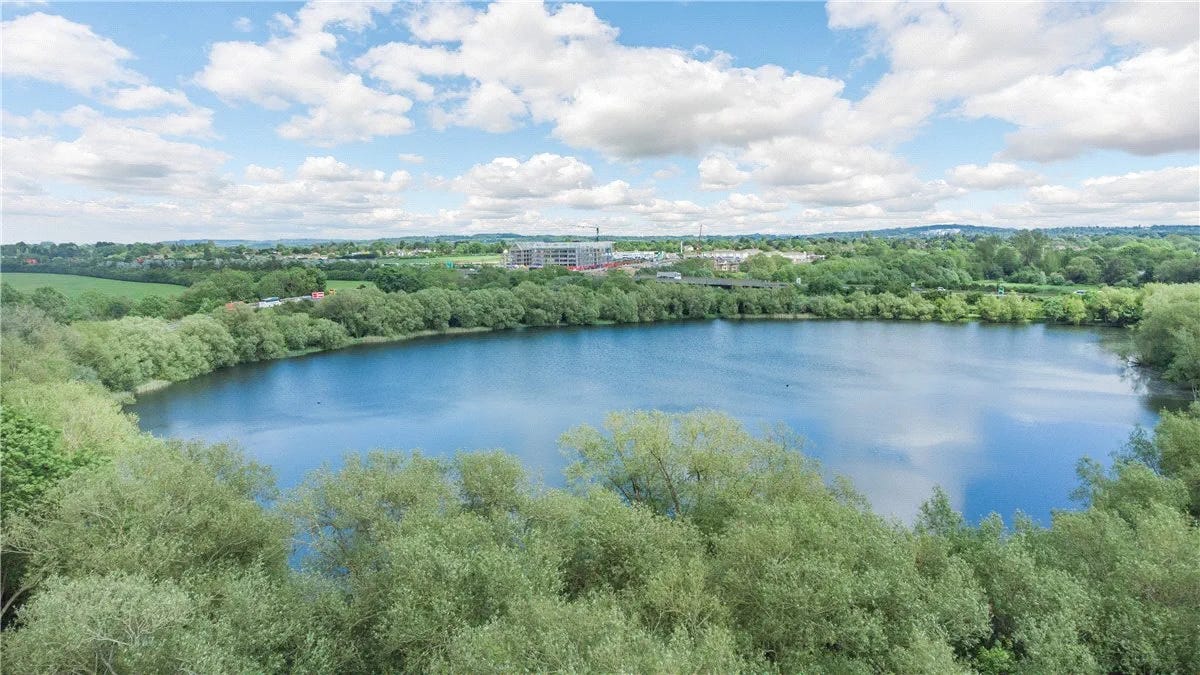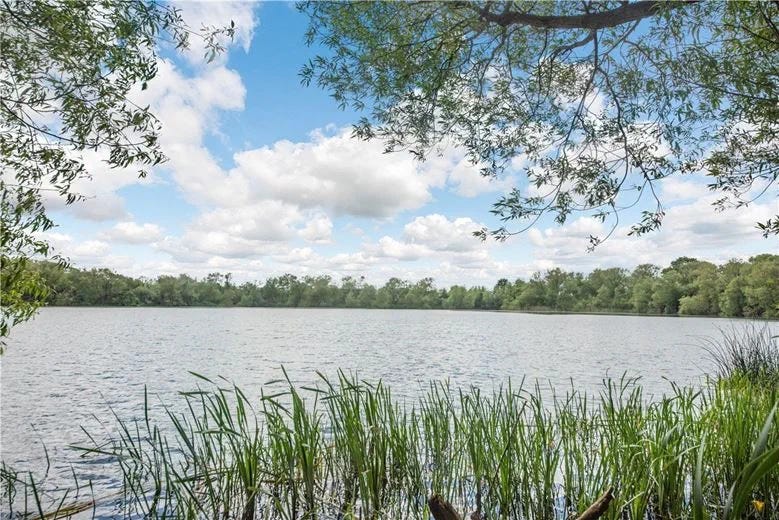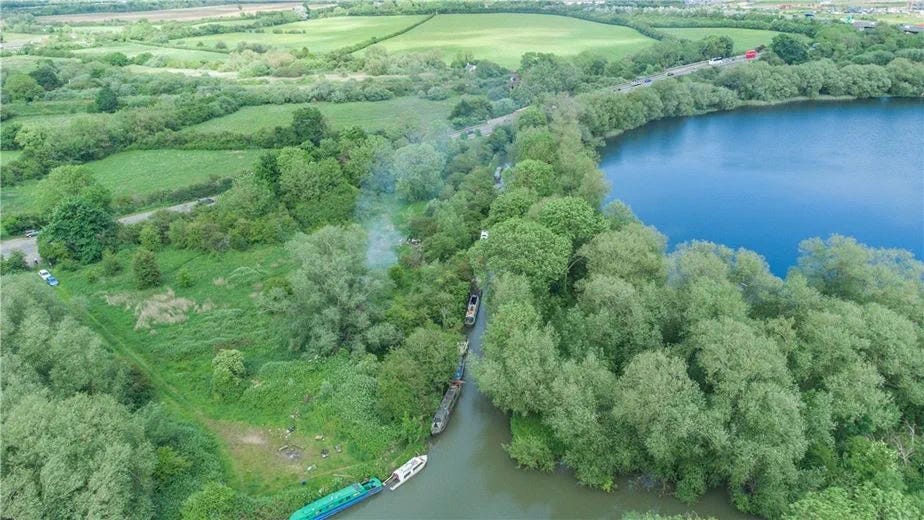Why we're trying to buy a lake
The environment agency are selling a piece of land near our village and we're trying to buy it for the local community
Today’s article is a special bonus issue. It isn’t maths related, but is tied to my love of wild swimming and my loathing of the unfettered way in which water company’s pollute our water courses, which I have written about before. I’ll be posting an article about the maths of Wimbledon, which will be more on trend. Meanwhile enjoy, and if you want to get involved with our lake project then you can register your interest here.
Last week, while politicians of all persuasions were scrabbling around trying to eke out last-minute support, I was doing very much the same. Rather than trying to win an election, however, I along with a group of neighbours have been trying to drum up support within our neighbourhood to buy a lake that lies on the edge of our village.
The lake, a former gravel pit known locally as “Duke’s lake” or the “Wolvercote pit”, sits within a 30-acre patch of land currently owned by the Environment Agency. Two weeks ago it was announced that it was for sale with a guide price of £100,000. Since then, we (the Wolvercote Pit Preservation Campaign) have been working on raising the capital required to prevent the site from falling into the hands those who might not have the natural beauty and ecological importance of the area in mind. But fundraising for the purchase and the ongoing maintenance of the site is easier said than done.
Even if we were to be successful in the purchase, the prospect of managing the land is not a simple one. The lake is bordered by the Cotswold railway line, two major roads (in the A40 and the A34) as well as an off-shoot of the Thames known as the Wolvercote Mill Stream. An important stretch of canal, which joins the river Thames to the Oxford Canal, runs right through the property. Duke’s cut, as it is known, separates the lake itself from the largest piece of land on the site and its only road access. Like much of the surrounding area, the site is at risk of flooding and any prospective owners would have the responsibility of managing a number of private individuals who are currently living on the site.
Why then, you might ask, would anyone want to buy this potential time and money sink, this literal gravel and metaphorical money pit? From our perspective there are a number of answers.
Firstly, the site sits within the greenbelt of the city of Oxford. As a semi-rural neighbourhood, which has been subject to significant development in the past few years - including on greenfield sites surrounding the village - we are naturally worried about the environmental impact that comes with developing ‘wild’ land. The site up for purchase is adjacent to two sites of special scientific interest (SSSI) and is in close proximity to the 1000 acres of SSSI that is Wytham woods – the most studied piece of woodland in the world. Maintaining the ecological character of the surrounding areas is of vital importance. If we were able to purchase the site we would ensure that both the land and the lake are managed so that the site’s biodiversity is preserved and enhanced.
Beyond the obvious environmental advantages are the benefits to the local people. We would aim to ensure the reserve will serve as an outdoor classroom for local schools and community groups, offering educational programs on ecology, conservation, and local wildlife.
Many of our local residents enjoy the benefits of regular wild swimming in our branch of the river Thames. The Wolvercote Mill stream (that abuts but doesn’t connect to the lake) is one of only three stretches of river in the country that has been granted “bathing water status”. Sadly, although this sounds like a good thing, it gives no guarantees that the water flowing through the stream is of sufficient quality to swim in. All it means is that the water is monitored regularly so that we know that it is often polluted enough to make it unsafe for swimming.
I have made no secret of my love of wild-swimming and my desire to swim in unpolluted water’s that pose no risk to my health. The Wolvercote pit offers those from the local area and beyond the opportunity to swim in a body of water that is free from the tyranny of the water companies and their unchecked ability to pollute our natural watercourses.
Speaking to local swimmers who have had the ingenuity to find their way through the gaps in the fence that currently surrounds the lake, I have heard tell of an “unrivalled swimming experience”. Intrepid wild-swimmers describe the tranquillity of the setting, the beauty of the surroundings and above all the clarity of the water. Wouldn’t it be lovely to open up to everyone the opportunity of sharing a sun-drenched morning with the creatures that make the unpolluted lake their home.
One fact that gives us hope that this sort of community-led buyout might be achievable is that it has been done before. One group, with similar aims to our own, the Langdyke Countryside Trust, have done it nine separate times. They have a track record of purchasing pieces of land to turn into community assets, including a number of former gravel pits. So while we know we don’t need to re-invent the wheel, the challenge remains whether, from a standing start, we can get our vehicle up to speed.
Our ultimate aim is to preserve this small oasis of Oxford greenbelt for the benefit of the local community. We are well on the way to raising the £100,000+ required to bring the site into community ownership and will continue to push on with our fund-raising efforts in the hope that we will be chosen as the preferred bidders allowing us to protect this special site. Of course, if you know of anyone who has a spare few thousand pounds to spend on a worthy cause, then you can register your interest here or you know where to find me.
This piece was originally published in The Independent.







Takes me back a very long time ago to student summer days swimming in old gravel pits near Reading! Was with grandchildren in Wales a few weeks ago when they were swimming and kyaking in a disused reservoir in the uplands.
Presumably you are in touch with the Canal & River Trust. They have a fantastic maintenance set-up and make a point that the 2000 miles system provides corridors for wildlife between refugia of biodiversity. Canals take the wild into and through the towns, which I think is important.
Easier in Wales and Scotland I guess, to get grants for biodiversity but you could qualify in the England bit?😊
Huge issues of course in the background maintaing water quality as we spread agri-industry and housing further upstream.
Hello Kit, thank you for the article on purchasing the lake and the surrounding area. Quick question: would it be possible to install solar panels, either floating on the lake or placed on the surrounding land and make them available for community ownership?
I am assuming the answer is no because of the wish to keep the area as natural as possible, but I thought I should just ask. The underlying idea would be to be one of the pioneers in linking the output of the solar farm to the individual minute by minute consumption of the local investors who bought shares in the venture, thus reducing their bills and genuinely decarbonising . (See UrbanChain.co.uk)
If this is of any interest, please do get in touch. Chris chrisgoodall2@gmail.com or 07767 386696